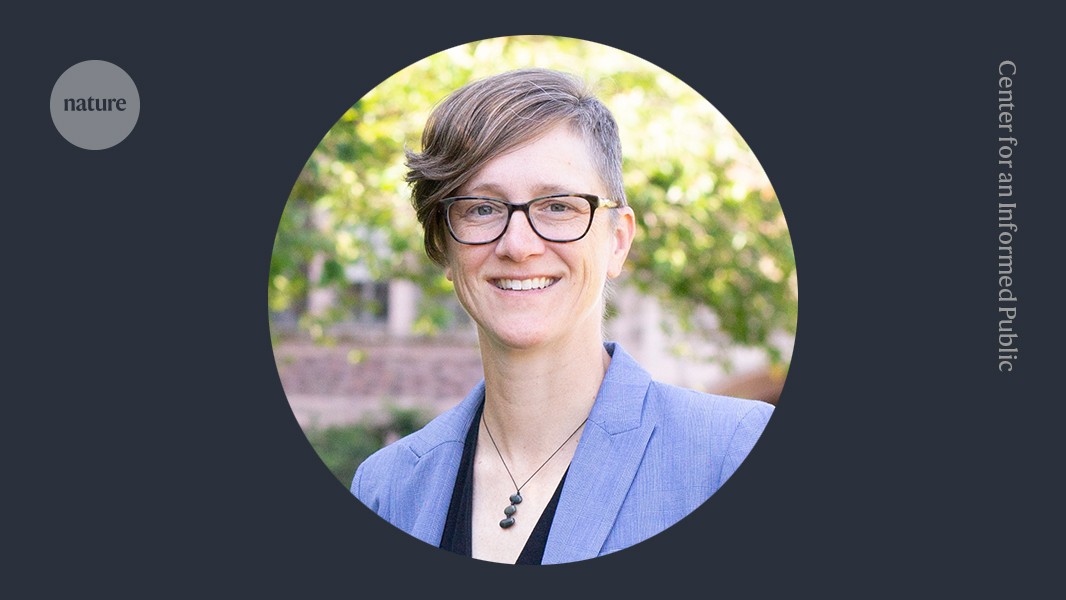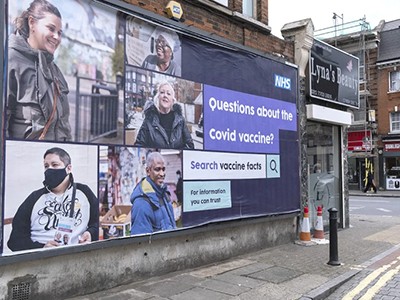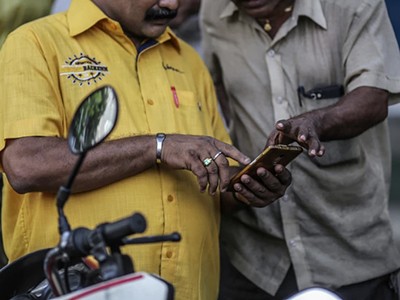This year’s US presidential race is unprecedented, with a last-minute switch in the Democratic Party’s nominee and assassination attempts targeting Republican Party candidate Donald Trump. As anxiety about the outcome mounts, and with conspiracy theories about the 2020 election results lingering, the stage is set for a period of intense rumouring about voting and counting-related processes.
Using ongoing social-media research conducted at the University of Washington’s Center for an Informed Public in Seattle, which I co-lead, my colleagues and I can identify rumours spreading across both Democratic and Republican online networks in real time. We can see how election rumours emerge as events unfold, and how they frequently combine first-hand accounts, such as photos or videos, with pre-existing narratives, for example that non-US citizens vote in large numbers. Understanding how election events combine with partisan tropes can make rumours more predictable (E. S. Spiro and K. Starbird Issues Sci. Technol. 39(3), 47–49; 2023). Here, we describe three types of rumour that we expect election deniers to lean on as we approach voting day.
Misinformation poses a bigger threat to democracy than you might think
False allegations and conspiracy theories about widespread voting by non-citizens is a major theme in this election. For example, we have seen several person-on-the-street video interviews on social-media platforms such as Tiktok and Instagram that supposedly show non-citizens admitting that they are registered, planning to vote or have voted. Some videos use selective editing and inaccurate subtitles to create a false impression. In other cases, interviewees have acknowledged providing erroneous answers owing to anxiety, for example not wanting a stranger to know that they are not a citizen.
We’ve seen this playbook before. In January 2016, just after he took office, then-president Trump claimed that votes cast by three million to five million illegal immigrants had cost him the popular vote. Yet, there is no evidence that large numbers of non-citizens vote illegally in the United States. A 2016 study of 42 jurisdictions estimated that about 30 of 23.5 million votes (0.0001%) were cast by non-citizens (see go.nature.com/3nuhdzo). But despite these extremely low numbers, the rumours are particularly persistent this year, aligned with a broader rise in anti-immigration rhetoric.
A second class of rumour relates to allegations about biases in election administration. Owing to the decentralized nature of the US election, something is likely to go wrong somewhere. And localized errors could be used to mislead by falsely assigning malintent to election officials, overlooking remedies or exaggerating impact.
Is AI misinformation influencing elections in India?
Registration forms or ballots might get mailed to the wrong person or address. A ballot design error might misspell a candidate’s name. For instance, about 250 electronic ballots e-mailed to military and overseas voters in late September by Palm Beach County, Florida, erroneously spelled Democratic vice-presidential nominee Tim Walz as ‘Tom Walz’. Although the error was swiftly rectified, several Democratic-leaning social-media users shared the story as an example of Republican scheming.
In such cases, people often share photos, videos and first-person accounts, which can spread widely online. The Trump campaign and several partisan political organizations are training ‘election-integrity’ volunteers and setting up reporting infrastructure — including through text messages and online forms — to collect evidence.
Such information could feed rumour machines. Social-media platforms are primed to facilitate the rapid spread of political rumours, including a whole theatre of influencers who work with their audiences to synthesize ‘evidence’ to fit pre-existing narratives.
How influencers and algorithms mobilize propaganda – and distort reality
During the vote-counting period, claims of ‘suspicious’ actors or objects are likely to arise. For instance, grainy photos might show a person rolling ‘suspicious equipment’ up to a counting facility. Videos and eyewitness accounts of white vans, ostensibly full of ballots of non-citizen voters, pulling up to a polling place might be posted. Each rumour helps to build a larger story that something is amiss, that someone is cheating and that the results cannot be trusted.
Such tactics were widely deployed to dispute the outcome of the 2020 US presidential election. In reality, the equipment in the worrisome boxes turned out to belong to a photographer from a local news outlet in Detroit, Michigan. The white vans were rentals regularly used by election officials to transport ballots from polling locations to vote-counting centres.
For all these rumours, real footage gets twisted into false narratives. The people standing on the side of truth and information integrity have one advantage this time: we’ve seen this script before. Researchers have a better understanding of the online dynamics around these rumouring processes — and we can call them out swiftly. Our team remains dedicated to providing conceptual frameworks and real-time analysis to help identify and resolve emergent rumours.
Our hope is that these insights can support election officials in preparing rapid response plans; journalists in better informing their audience; and citizens in recognizing false rumours and political manipulation.
Competing Interests
The author declares no competing interests.





